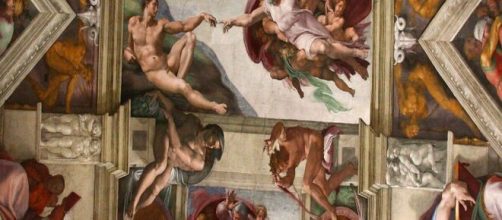Art is not forever. Never mind what the ancient Greeks said. Art can’t be forever because time won’t let it. As a model, the Sistine Chapel ceiling fresco got grimy with candle smoke. Of course, it didn’t help that Michelangelo used thin layers of paint that fades easily. Anyway, all would have been lost if not for restoration.
Aid for ailing art
Restoring Michelangelo’s painting took a truckload of money. Who’s going to fund the restoration of degrading museum art stacked in storage unfit for a viewing? Certainly not the institutions that house them.
Museums are so cash-poor that they’re selling off parts of their collections to keep the lights on.
Deliverance comes from Bank of America’s Art Conservation Project, in the business of saving time-worn painting and sculpture since 2010. To date, the bank has provided grants for 170 restorations in 33 countries. This week, Forbes reports 2021 grants going to 23 conservation projects in 12 countries and nine American cities. Among these is Eva Hesse’s sculpture Expanded Expansion in the Guggenheim Museum collection. Unfortunately, the work contains latex, which tends to deteriorate.
High praise for Hesse
Guggenheim director Richard Armstrong told Forbes that f Expanded Expansion is Hesse’s “most important work” and that the museum has an “obligation to history to try and revive the piece.” With Bank of America’s help, Armstrong anticipates showing this piece by 2024.
So, you’re likely asking, what makes this piece so worthy? The short answer is that Expanded Expansion is about life. Life and its jillion contradictions between the logical and the absurd, something Hesse knows a lot about. As she told art historian Cindy Nemser in her 1975 book Art Talk, “I always work with contradictions, which is my idea of life...the whole absurdity of life, everything for me has always been opposite.”
Hard times
Hesse’s life began in Nazi Germany.
Her parents divorced, and when she was 10 years old, her mother, who suffered mental illness, committed suicide. Her father, who was sickly, re-married a woman Hesse “detested.” She herself suffered a fatal brain tumor.
Because of all that or in spite of all that, she felt freer than most to take chances. (And therein lies one of those contradictions she talked about).
As Hesse told Nemser, “I have no fear. I could take risks…it’s total freedom.”
Edifying nonsense
You can see the absurd in her effort to capture the look of change in static sculpture. Expanded Expansion is made of materials that don’t last - rubberized cheesecloth that looks like skin infused with latex wrapped around fiberglass poles. Hesse was clearly not inclined to endow her work with any sense of importance. Here, she simply repeated panels of these malleable materials and hung them like expandable shower curtains. Nothing is static.
And because latex is known to change over time – discolor, crack, and ultimately disintegrate into dust, one wonders why the Guggenheim is so intent on restoring it.
Perhaps it’s to give future art audiences the chance to experience Hesse’s idea of life’s contradictions. But bringing back to life Expanded Expansion, which she intended to disintegrate, could be the ultimate contradiction.


